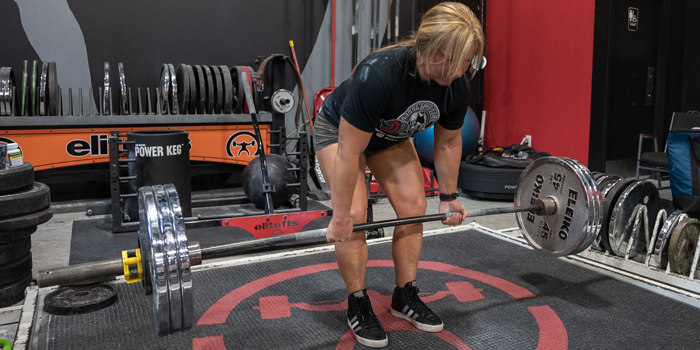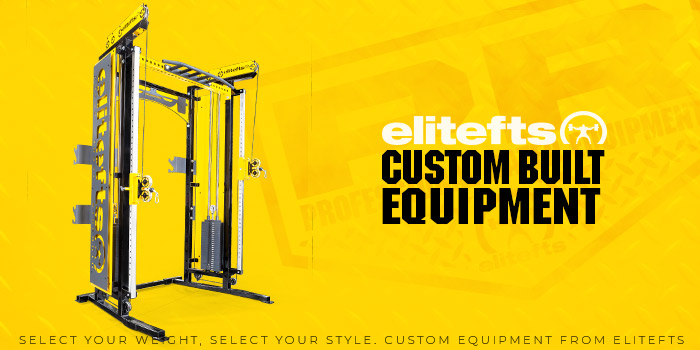
While the glutes have received more and more love over the last decade, the antagonistic hip flexors are a group of muscles that have gotten used to being hated on by many professionals and trainees as a pain in the ass combination of stiffness and hip issues. While this can be a stiff and problematic area, especially with so many people sitting all day at their jobs, it is also an area that can be weak and neglected in training, except for stretching and mobilizing them.
When we look at this group of muscles, we can break it down into a few big-time players who help to an extent. The psoas, iliacus, rectus femoris, and tensor fasciae latae (TFL) are all major participants, while the sartorious and upper adductors all help out depending on position and activity. For this article, we will focus on the big ones.
Anatomy Refresher
The psoas attaches to the front of the pelvis and shoots back through the torso to attach at the front of the lumbar spine, exerting influence over both the hips and the spine. The iliacus lies on the front of the iliac fossa, working closely with the psoas on hip action but exerting some of its own unique influence over the ilium itself. The rectus femoris is the only quad muscle that crosses both the hip and knee, helping to flex the hip in addition to working with the other quads to extend the knee. The TFL sits slightly off to the side of the pelvis, helping with hip flexion in addition to abduction and internal rotation while also influencing the tension in the IT band running down the outside of the leg.
While all of these muscles work in multiple planes of motion and work with or oppose each other depending on the activity and position, we are going to focus on the sagittal plane, looking at their common function, hip flexion.
Why Do We Need to Train Hip Flexion?
Whether you are talking about running, squatting, or plenty of other activities, hip flexion is a major component. Let's use squatting as an example. If you are going down in a squat, you should be "pulling yourself" into the bottom of the movement. Engaging your hip flexors to help facilitate this will ensure you're stable and strong with a solid low back position. Without actively engaging them, especially the psoas in the bottom since it's most active above 90 degrees, you are more likely to get loose in the back and lose stiffness—making it harder to come back up.
RECENT: Why Powerlifters Should Front Squat
If these muscles are weak (and they can be shortened, normal length, or overstretched) this is going to be harder to do. Even at the start of a deadlift, getting some co-contraction all around the hip as you take the slack out of the bar will provide much better tension as you get ready to pick the bar up. If you're sprinting, hip flexors are responsible for a large part of the action as you drive your hip and leg forward at a high velocity with each step. They help to anchor your pelvis from the front along with your abdominal muscles.
Closing the Gap Through Hip Flexion
Without them, you are leaving a pretty large gap on one side of the main hinge point of your entire kinetic chain. Suppose hip flexors are weak and neglected. In that case, you are leaving a pretty large gap in the potential of your squat, deadlift, sprint, and pretty much anything else that involves movement of the hips (basically everything).
Taking it a step further, from a synergistic standpoint, the psoas can often be weaker than the rectus femoris and/or TFL. This can lead to overuse and strains of the other two, especially with sprinting; therefore, being sure there is some balance among the flexors is also important. Try holding your knee up above 90 degrees and comparing it to or below 90 for a quick self-test.
Now, if they are excessively stiffened up and are glaringly pulling your pelvis into an anterior tilt, you should definitely get that cleaned up first. Get an assessment to see what is all going on around your pelvis and be sure you are not digging a bigger hole for yourself by choosing the wrong exercises if you are locked up in this area. That being said, depending on the circumstances, directly training these muscles through a full range of motion can still help to "unlock" things just by getting these tissues moving and living, provided that other specific weak points around the hips, pelvis, and torso (or anywhere along the chain that is found) are also addressed.
Hip Flexor Training
Should you decide that you are ready to start hammering out some hip flexor work. Here are a few great, unique exercises to train them directly in the weight room, many of them not very common to see, in my experience.
Roller Knee Raise
These work great to directly target the hip flexors as a whole in tandem with the abdominals. These are a great way to add significant load to this movement and challenge these muscles to get stronger. If you want to handle big weights in the main lifts, training your abs and hips with heavy weights can go a long way in helping. Be sure to control the eccentric/lowering portion of the movement.
Reverse Cable Squat
Not only do reverse cable squats smoke your hip flexors and abs, but they also train and teach you to ground yourself into the floor and pull yourself into the bottom of a squat properly. If you can learn how to use your psoas at the very bottom of this movement, you will likely find it is easier to get depth in a squat without rounding and losing your low back position.
Band Reverse Crunch
The band reverse crunch is another great way to add a good amount of resistance to make this area stronger. Keep your low back solid and pull your knees toward your chest, fighting for the end range with a little bit of trunk curl.
Band Dead Bug Breathing
While all of the above exercises train hip flexion with a bent knee, here we hit things eccentrically and statically. You'll set up with a straight leg, increasing the lever length, building some static stability, and building some harmonious stability with breathing, training to brace while breathing.
Standing Knee Raise
With standing knee raises, we can train hip flexion on one side while driving hip extension on the other. We do this when we run, walk, leap, etc. You can hit these full range or focus on above 90 degrees if the psoas is a weak point. Be sure to keep the hips and ribs square while avoiding any excessive tilt.
A few sets of 8-15 generally work well for accessory work with these exercises. Give these a shot and help your lifts and athletic performance with improved strength and control on the front side of your main hinge.
Nick Rosencutter is the founder and owner of Rosencutter Ultra Fitness & Performance in Greenfield, WI. Nick is a Certified Strength and Conditioning Specialist and Certified Personal Trainer through the National Strength and Conditioning Association. He is also a Licensed Massage Therapist and Full Body Level 2 Active Release Techniques provider with Elite Provider designation. Nick heads up strength and conditioning at Greendale High School and regularly trains and consults with youth to elite-level Olympic speed skaters.











2 Comments